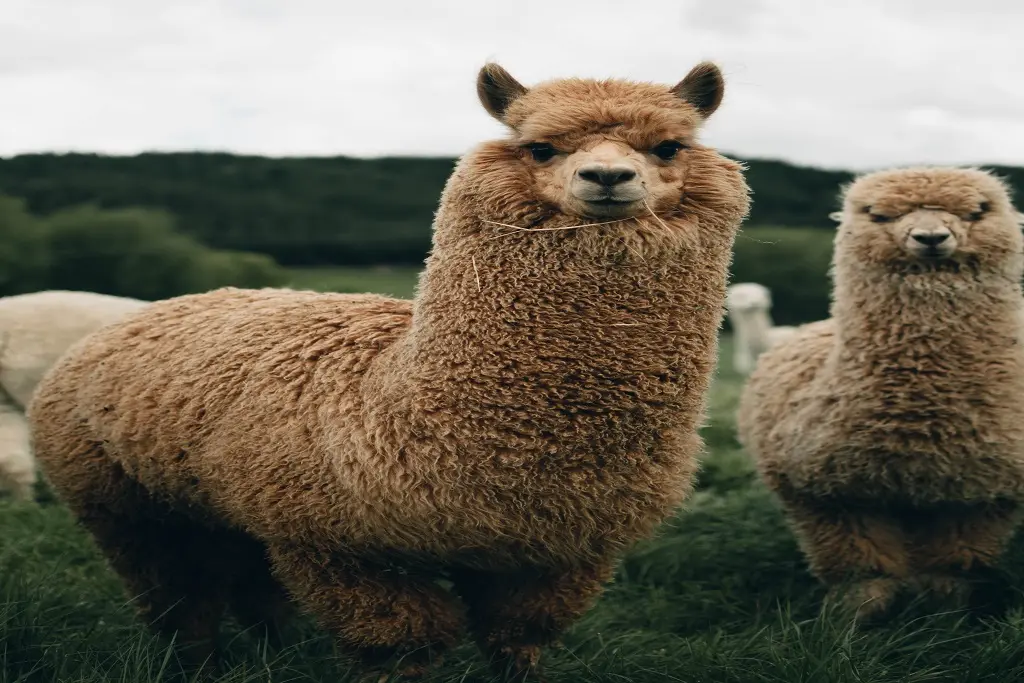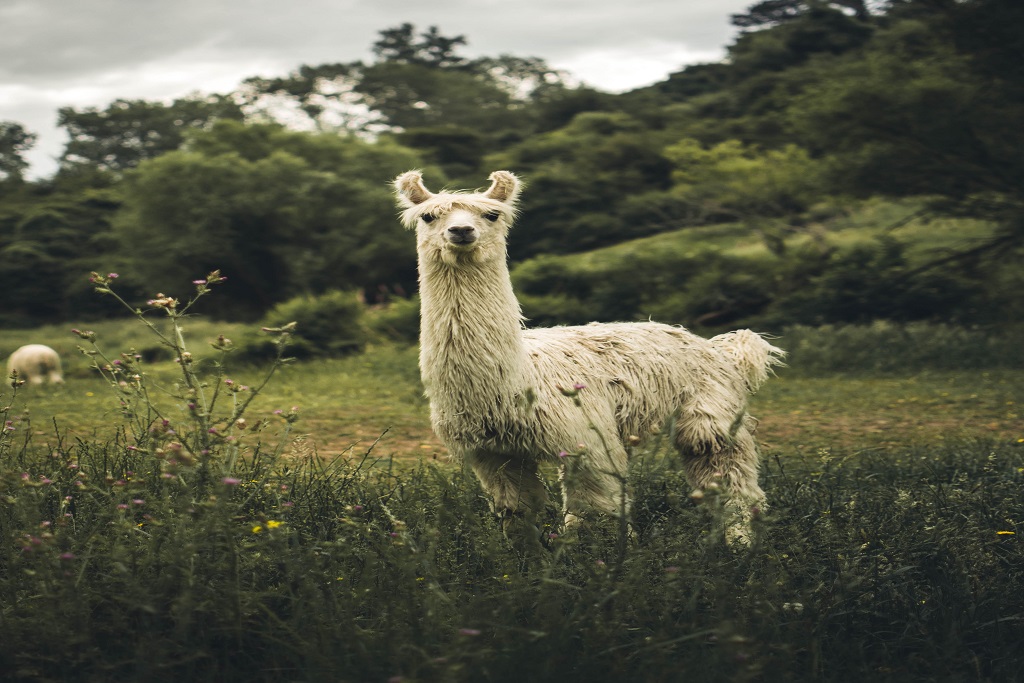Information About The Llama
Llamas Are Domesticated Mammals That Belong To The Camelid Family, Which Also Includes Alpacas, Camels, And Vicuñas.
They Are Native To South America And Have Been Used By Humans For Thousands Of Years For Transportation, Wool, And Meat.
Llamas Are Known For Their Gentle Nature And Are Often Used In Therapy And As Pack Animals For Hiking And Camping. They Can Reach Up To 6 Feet Tall And Can Weigh Up To 400 Pounds.
They Have A Lifespan Of 15-25 Years.
Llamas Are Also Known For Their Unique Appearance, With Long Necks And Legs, And A Distinctive Long Fur That Can Come In A Variety Of Colors.
They Have A Thick, Woolly Undercoat That Is Covered By A Longer, Coarser Outer Coat.
The Fur Is Often Used To Make Clothing And Blankets, And Can Be Sheared Every One To Two Years.
Llamas Are Also Known For Their Expressive Faces, Large Eyes, And Long Eyelashes.
Llamas Are Highly Social Animals And Are Often Kept In Herds.
They Have A Strong Sense Of Community And Will Often Stand Together And Protect One Another From Perceived Threats.
They Are Also Known For Their Intelligence And Trainability, And Can Be Taught To Do A Variety Of Tasks, Such As Carrying Packs, Leading Hikes, And Participating In Therapy Sessions.
Llamas Are Also Known For Their Unique Vocalizations, Which Include Humming, Clucking, And Whining.
They Also Use A Wide Range Of Body Language To Communicate, Such As Standing Tall To Assert Dominance, And Lowering Their Head And Puffing Out Their Chest To Show Submission.
Llamas Have Been Domesticated For Thousands Of Years In South America, And Are Still Used Today By Indigenous People In The Andes For Transportation And As A Source Of Food.
They Were Also Introduced To North America And Europe, And Are Now Kept By Farmers, Ranchers, And Hobbyists For A Variety Of Purposes, Including Fiber Production, As Pack Animals, And As Pets.

How Do Llamas Live?
Llamas Are Hardy Animals That Are Well Adapted To Living In A Variety Of Environments.
They Are Native To The High, Arid Regions Of South America, And Are Used To Living In Areas With Little Vegetation And Harsh Conditions. They Are Able To Survive On Sparse Vegetation And Can Go For Long Periods Without Water.
In The Wild, Llamas Live In Herds And Roam Over Large Areas In Search Of Food And Water.
They Are Able To Navigate Difficult Terrain, Such As Steep Mountains And Rocky Outcroppings, And Are Known For Their Endurance And Stamina.
Domesticated Llamas Are Often Kept On Farms Or Ranches, Where They Have Access To Food And Water, And Are Protected From Predators.
They Can Be Kept In Pastures Or Enclosed Areas, And May Be Kept With Other Llamas Or Other Types Of Animals.
Llamas Are Known For Their Hardiness And Ability To Adapt To A Wide Range Of Environments.
They Are Able To Survive In A Variety Of Climates, From Hot Deserts To Cold Mountains, And Can Thrive On A Variety Of Types Of Vegetation.
Llamas Are Also Known For Their Longevity And Strong Health, With A Lifespan Of 15-25 Years.
They Are Resistant To Many Common Diseases, And Are Generally Easy To Care For With Regular Veterinary Check-ups, Proper Nutrition And Shelter.
Llamas Are Well-adapted To Living In A Variety Of Environments, And Can Thrive With Proper Care And Management.
What Is The Difference Between A Llama And A Camel?
Llamas And Camels Are Both Members Of The Camelid Family, Which Also Includes Alpacas And Vicuñas. However, There Are Several Key Differences Between The Two Animals.
One Of The Main Differences Is Their Size. Llamas Are Generally Smaller Than Camels, With An Average Height Of Around 5-6 Feet And An Average Weight Of Around 250-400 Pounds.
Camels, On The Other Hand, Can Reach Up To 7 Feet In Height And Can Weigh Over 1,000 Pounds.
Another Difference Is Their Humps.
Camels Have One Or Two Large Humps On Their Back, Which Are Used To Store Fat And Water. Llamas, However, Do Not Have Humps.
Llamas Also Have Different Ears Than Camels.
Llamas Have Longer Ears That Are More Pointed, While Camels Have Shorter, Round Ears.
Llamas Are Also Domesticated Animals That Are Primarily Used For Transportation, Wool And Meat, While Camels Are Mostly Used For Transportation In Desert Regions And Their Hump Is Used As A Water Reserve.
Llamas Are Also Known For Their Gentle Nature And Are Often Used In Therapy And As Pack Animals For Hiking And Camping, Whereas Camels Are Known For Their Hardiness And Ability To Survive In Harsh Desert Conditions.
Another Difference Between Llamas And Camels Is Their Teeth Structure, Llamas Have Molars That Have High-crowned, Hypsodont Teeth, Which Is An Adaptation To Their Grazing Lifestyle And Enable Them To Chew Tough Vegetation.
Camels, On The Other Hand, Have A Different Set Of Teeth, They Have Low-crowned, Brachydont Teeth, Which Is An Adaptation To Their Browsing Lifestyle And Enable Them To Chew Tough Plants And Shrubs.
Another Difference Is Their Use Of Water, Llamas Are Able To Survive For Long Periods Without Water, Due To Their Ability To Obtain Water From The Plants They Eat.
Camels, On The Other Hand, Have A Different Mechanism To Survive In The Desert, They Are Able To Store Water In Their Humps, Which Allows Them To Survive For Long Periods Without Access To Water.
Llamas And Camels Also Have Different Behavior, Llamas Are Known For Their Social Nature And Are Often Kept In Herds, They Have A Strong Sense Of Community And Will Often Stand Together And Protect One Another From Perceived Threats.
Camels, On The Other Hand, Are Known For Their Independence And Are Often Kept Alone, They Are More Solitary Animals That Can Survive In Harsh Desert Conditions.
Llamas Are Indigenous To South America While Camels Are Native To Asia And North Africa.
How Much Is A Llama?
The Price Of A Llama Can Vary Greatly Depending On Factors Such As Age, Sex, Breeding, And Training.
A Young, Unproven Llama Can Cost Anywhere From A Few Hundred Dollars To A Few Thousand Dollars.
An Adult, Proven Breeding Llama Can Cost Anywhere From A Few Thousand Dollars To Tens Of Thousands Of Dollars.
A Show-quality Llama Or One With Advanced Training Can Cost Even More.
It Is Also Depend On The Location, In Some Area The Price Of Llama Is Higher Than Other Area Because Of Less Availability Of Llama In That Area.
It Is Also Important To Keep In Mind That Owning A Llama Requires Ongoing Expenses Such As Feed, Veterinary Care, And Shelter.
It’s Always Good To Research And Ask Around Before Buying A Llama To Get An Idea Of The Prices In Your Area.
Additionally, The Price Of A Llama May Depend On Its Intended Use.
For Example, A Llama Used For Breeding Or Showing May Be More Expensive Than One Intended For Use As A Pack Animal Or As A Companion Animal.
It’s Also Important To Consider The Llama’s Bloodline, Genetics And Its Health Status. A Llama From A Well-known Bloodline With Good Genetics And Sound Health Will Likely Be More Expensive Than One Without These Attributes.
It’s Also Good To Be Aware That Buying A Llama From A Reputable Breeder Or Seller May Cost More Initially, But It May Save Money In The Long Run By Ensuring That The Llama Is Healthy And Well-suited For Its Intended Use.
EXCEllent